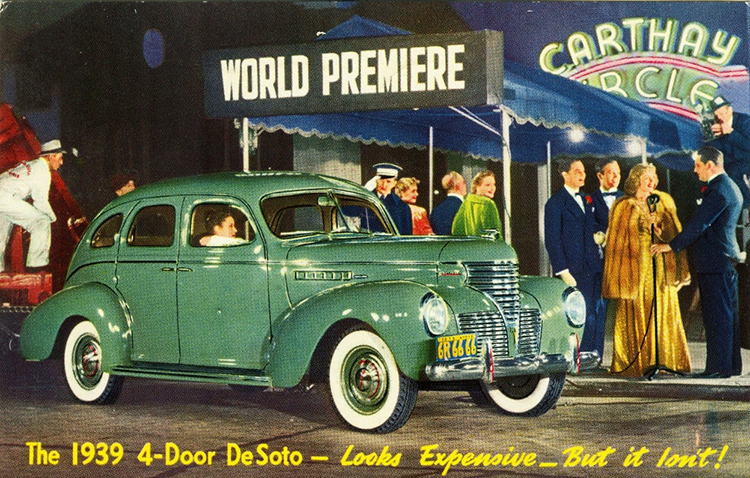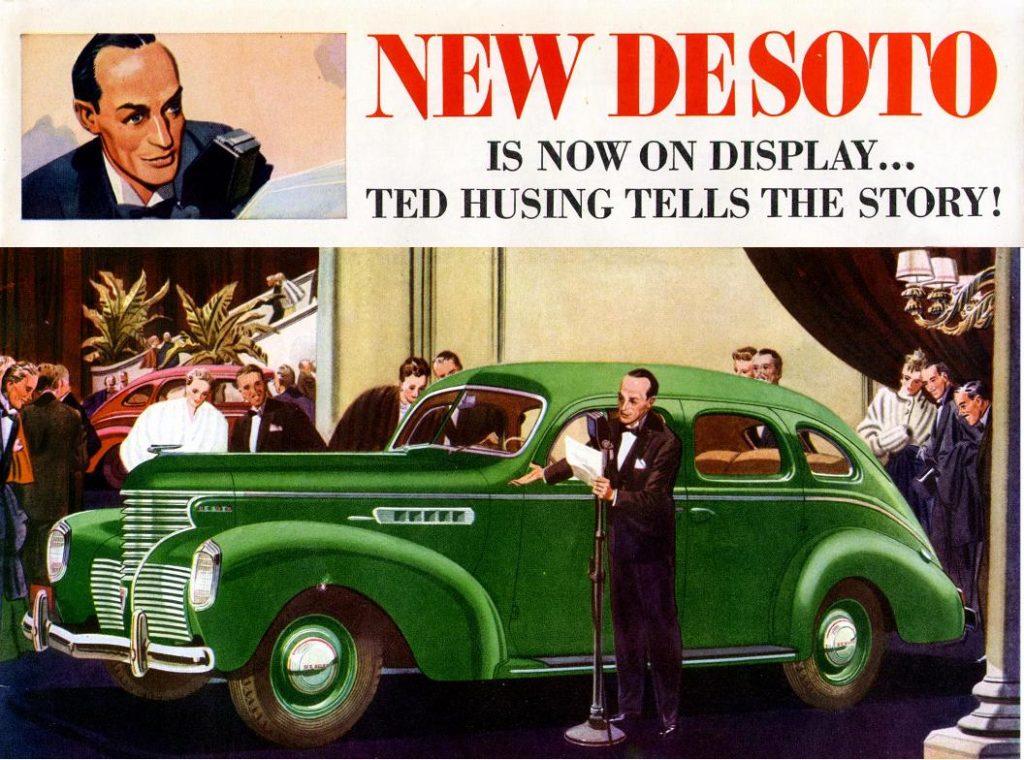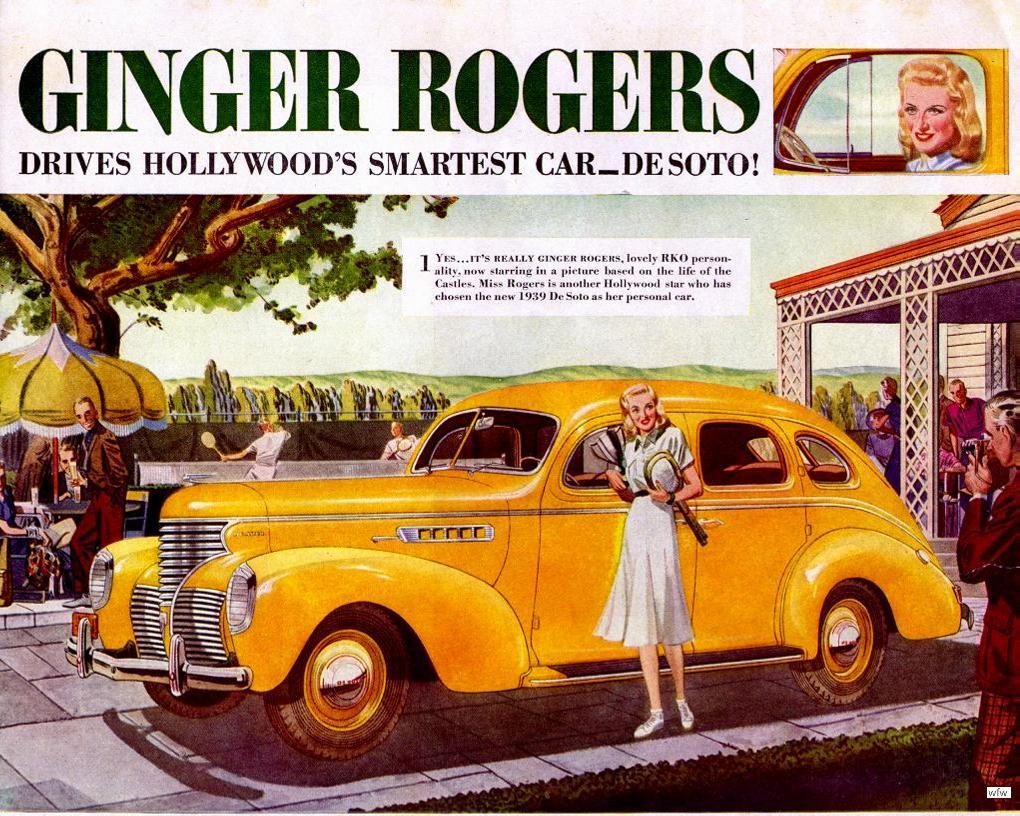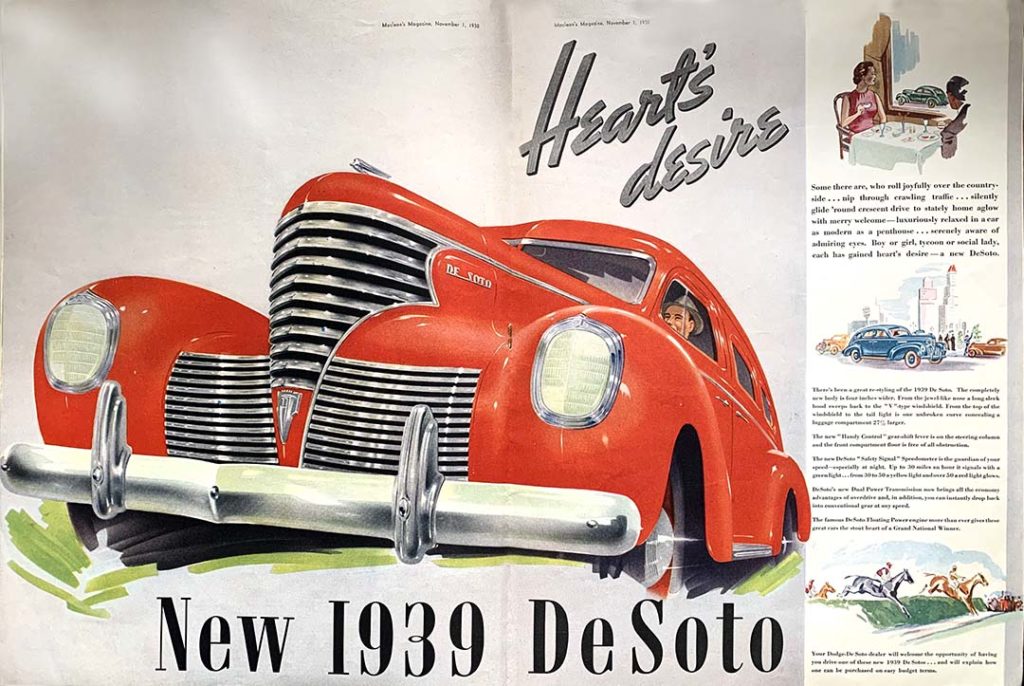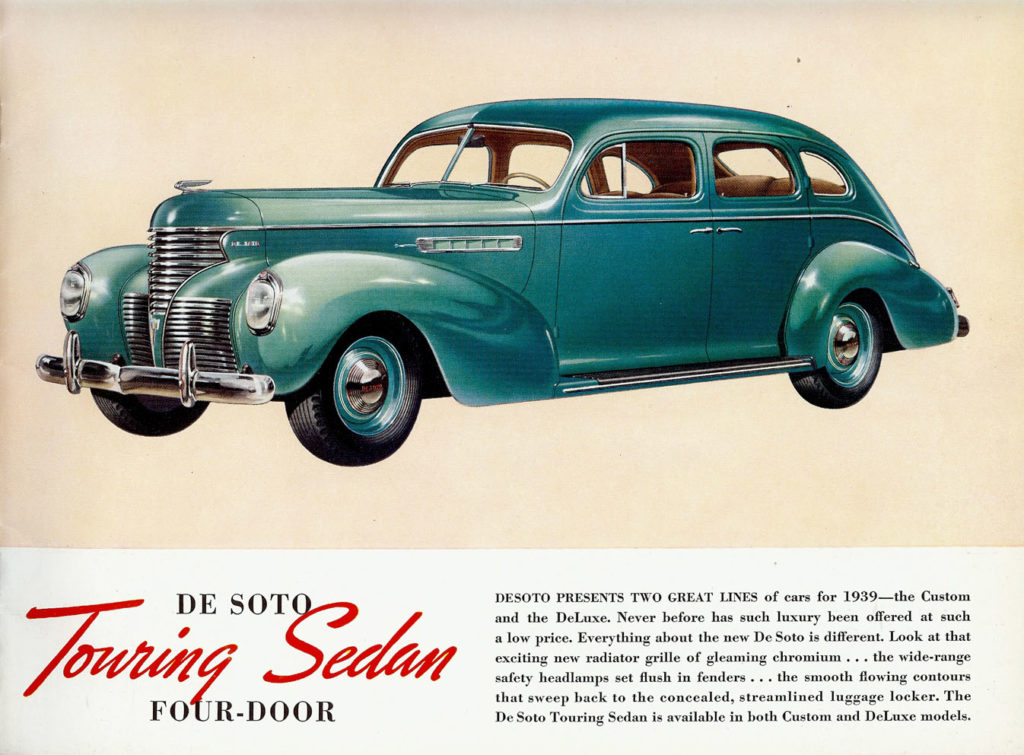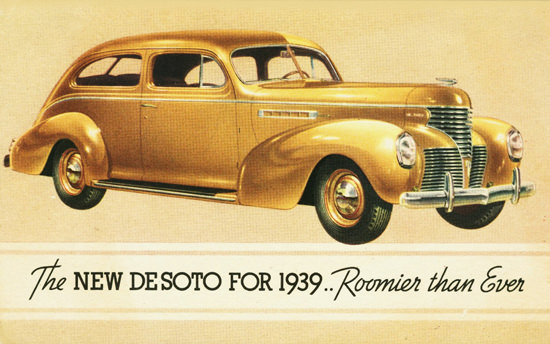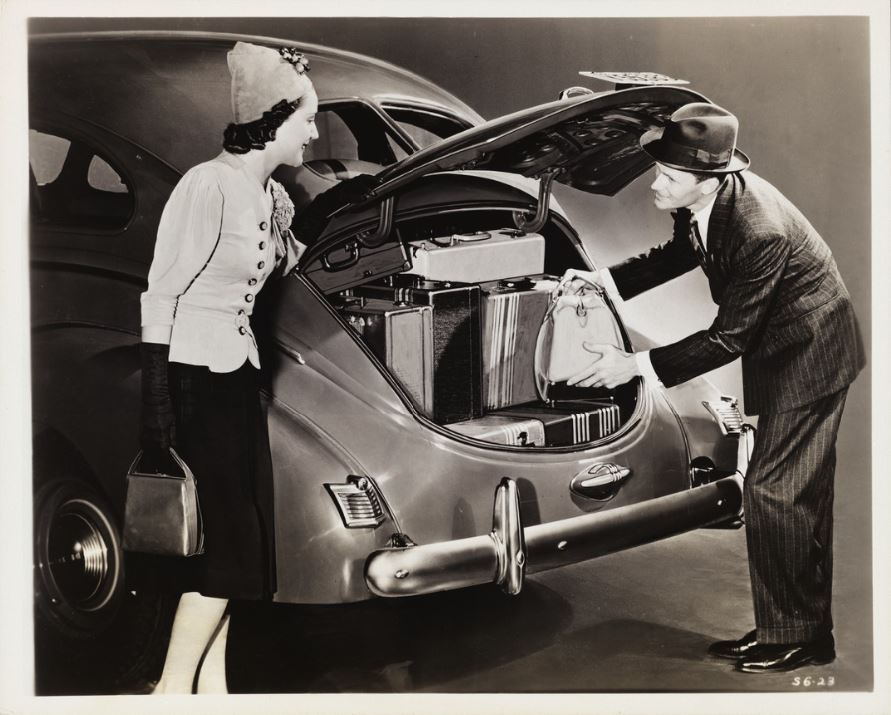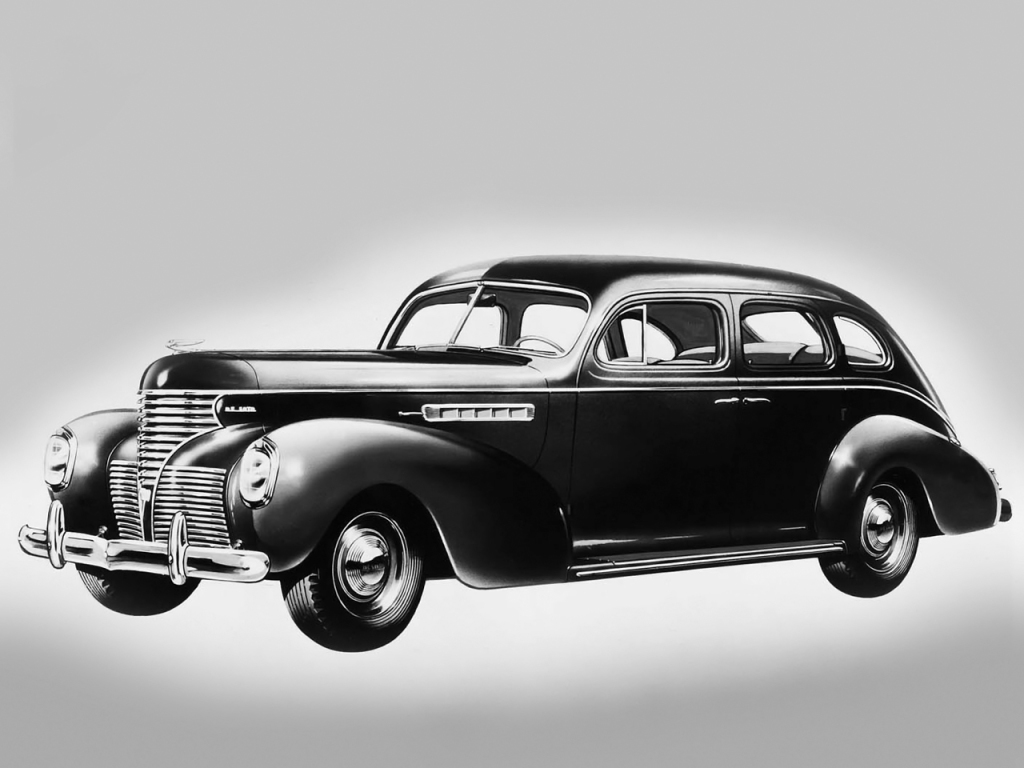1939
The 1939 S6 DeLuxe and Custom series received an all-new body, including the very notable oval headlamps. Elements of function and form were brought together with intent and purpose on the existing chassis. Triple grilles appeared up front with the new headlights, which were now completely engulfed by the fenders. The "vee" windshield returned after a short absence, which split the wind as it rushed back to the new sweeping fastback design. On sedans, there was no longer an option to get a car with or without a trunk and the rear pillars of the 4-doors were arched forward more like their coupe counterparts. All these changes that went into the new tooling and bodies were the result of one of the most extensive dealer research campaigns ever done by DeSoto, accomplished via questionnaires, interviews, and field meetings.
New in 1939 was Chrysler's new "Superfinishing" method, which applied to moving parts. The super-slick machining treatment, applied to parts such as the crankshaft, camshaft, pistons, etc., created a finish smoother to within 3 to 10 millionths of an inch, which resulted in increased smoothness and longer engine life. Aiding longer engine life was also an optional overdrive unit with "Step-Down" feature. It operated in second and high gears and was disengaged by pressure on the accelerator pedal and re-engaged by pedal release. Greater fuel was an added bonus of this addition. Also new this year was a gearshift on the steering column. Between that and a relocation of the hand brake to the left side, space for a center passenger was considerably opened up.
Due to lack of popularity in 1938, a convertible body was not offered this year. In place of the convertible, a roof hatch was made available, but was not popular and discontinued. New for body styles in 1939, however, was the Custom Club Coupe built by Hayes Body Co. in Grand Rapids, Michigan. This had a longer roof and shorter trunk than the regular coupe. Side window accents were also thinner with sharper corners.
Engine: 228 c.i. 6 cylinder, 93 hp standard, 100 hp w/optional head
Wheelbase: 119 inches (standard), 136 (7+ passenger cars)
DeSoto Six VIN Start: 5634001
DeSoto Six VIN End: 5687134
DeSoto Taxi Six VIN Start: 5095401
DeSoto Taxi Six VIN End: 5096648
Engine Numbers: S6-1001 - S6-55461
Production Numbers
Deluxe 4-Door Touring Sedans Produced: 31,513
Deluxe 4-Door 7-Passenger Sedans Produced: 425
Deluxe 2-Door Coupes Produced: 2,124
Deluxe 2-Door Touring Sedans Produced: 7,472
Deluxe Business Coupes Produced: 5,176
Custom 4-Door Touring Sedans Produced: 5,993
Custom 4-Door 7-Passenger Sedans Produced: 30
Custom 7-Passenger Limousines Produced: 84
Custom Club Coupes Produced: 264
Custom 2-Door Coupes Produced: 287
Custom 2-Door Touring Sedans Produced: 424
Custom Business Coupes Produced: 498
Source: The Plymouth and DeSoto Story by Don Butler

